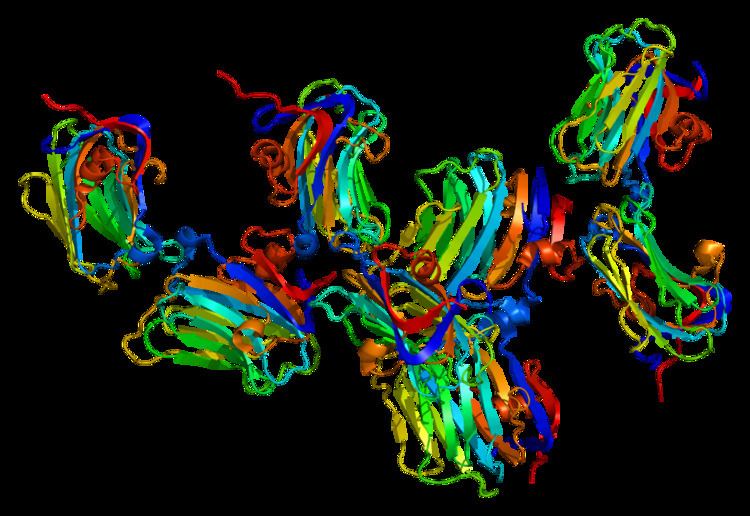Entrez 9378 | Ensembl ENSG00000179915 | |
 | ||
Aliases NRXN1, Hs.22998, PTHSL2, SCZD17, neurexin 1 External IDs MGI: 1096391 HomoloGene: 21005 GeneCards: NRXN1 | ||
Neurexin-1-alpha is a protein that in humans is encoded by the NRXN1 gene.
Contents
Neurexins are a family of proteins that function in the vertebrate nervous system as cell adhesion molecules and receptors. They are encoded by several unlinked genes of which two, NRXN1 and NRXN3, are among the largest known human genes. Three of the genes (NRXN1-3) utilize two alternate promoters and include numerous alternatively spliced exons to generate thousands of distinct mRNA transcripts and protein isoforms. The majority of transcripts are produced from the upstream promoter and encode alpha-neurexin isoforms; a much smaller number of transcripts are produced from the downstream promoter and encode beta-neurexin isoforms. The alpha-neurexins contain epidermal growth factor-like (EGF-like) sequences and laminin G domains, and have been shown to interact with neurexophilins. The beta-neurexins lack EGF-like sequences and contain fewer laminin G domains than alpha-neurexins.
Genomics
The gene is found in a single copy on the short arm of chromosome 2 (2p16.3). The gene is 1,112,187 bases in length, is located on the Crick (minus) strand and encodes a protein of 1,477 amino acids (molecular weight 161.883 kDa).
Mutation of this gene that interrupt its expression have been associated with Schizophrenia, autism, and intellectual disability (NRXN1 mutations and brain disorders).
Interactions
NRXN1 has been shown to interact with NLGN1.
